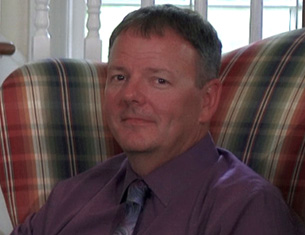In Difficult Times Good People gravitate towards Absolute Truth
Six Trends to Shape 2016
Publisher's note: This article appeared on John Hood's daily column in the Carolina Journal, which, because of Author / Publisher Hood, is linked to the John Locke Foundation.
 RALEIGH "Prediction is very difficult," said physicist Niels Bohr, "especially if it's about the future." This sounds like a sort of Yogi Berra-style quip. But Bohr was actually making a serious point about prediction - one that would-be political forecasters would be well advised to take to heart.
RALEIGH "Prediction is very difficult," said physicist Niels Bohr, "especially if it's about the future." This sounds like a sort of Yogi Berra-style quip. But Bohr was actually making a serious point about prediction - one that would-be political forecasters would be well advised to take to heart.
If you would predict the future, you must first have formulas or rules of thumb that successfully predict the past. When trying to concoct statistical models to forecast the outcomes of presidential elections, political scientists run dozens, hundreds, or even thousands of simulations of past election cycles. They tweak this variable or add that one, looking for a high rate of success over as many elections as they have enough data to study.
As it happens, there are now pretty good models for presidential elections. While hardly perfect, they do tend to provide useful probabilities for the national popular vote, at least, if not specific state outcomes or Electoral College counts. The trajectory of the economy in the months leading up to Election Day is a common element of these models. Another is public approval or disapproval of the incumbent president.
For gubernatorial elections like the Pat McCrory-Roy Cooper matchup we'll likely see here in North Carolina in 2016, however, the available models are rarer and have yet to develop the same level of empirical support. Still, most of the research currently available does suggest that the same sort of variables - such as economic momentum and the approval ratings of incumbent politicians - have some predictive force. Here are six key statistics to watch over the next several months as indicators of which way the North Carolina governor's race may go:
Of these six trends, then, it would be fair to say that three of them - presidential job approval, employment, and personal income - augur well for the Republican incumbent at the moment. The other three - gubernatorial job approval, unemployment rate, and GDP - point the other way.
But the election isn't next month. It's a year from now. If by next summer Obama continues to be unpopular in North Carolina, job and income growth continues unabated, and the GDP and unemployment rates converge with the other trends, Pat McCrory will be in good shape. But might the economy take a swoon between now and then?
Another physicist, Albert Einstein, offered good advice: "I never think of the future. It comes soon enough."
Go Back

John Hood
If you would predict the future, you must first have formulas or rules of thumb that successfully predict the past. When trying to concoct statistical models to forecast the outcomes of presidential elections, political scientists run dozens, hundreds, or even thousands of simulations of past election cycles. They tweak this variable or add that one, looking for a high rate of success over as many elections as they have enough data to study.
As it happens, there are now pretty good models for presidential elections. While hardly perfect, they do tend to provide useful probabilities for the national popular vote, at least, if not specific state outcomes or Electoral College counts. The trajectory of the economy in the months leading up to Election Day is a common element of these models. Another is public approval or disapproval of the incumbent president.
For gubernatorial elections like the Pat McCrory-Roy Cooper matchup we'll likely see here in North Carolina in 2016, however, the available models are rarer and have yet to develop the same level of empirical support. Still, most of the research currently available does suggest that the same sort of variables - such as economic momentum and the approval ratings of incumbent politicians - have some predictive force. Here are six key statistics to watch over the next several months as indicators of which way the North Carolina governor's race may go:
- Governor's approval rating. During September, four different pollsters tested McCrory's job approval. Averaging them together yields 42 percent approval to 43 percent disapproval. At this early juncture, however, poll averages are mixing samples of all adults or registered voters (which show more disapproval than approval of McCrory) with samples of likely voters (which show the governor in pretty good shape). Such averages will be more useful as we actually get into the election year.
- Presidential approval rating. In North Carolina, President Barack Obama has job-approval numbers in the low 40s, even in samples not adjusted for likelihood of voting. That's an unambiguously bad sign for all Democrats on the 2016 ballot, including Cooper.
- Employment. Over the past 12 months, North Carolina employers have added some 108,000 net new jobs. The resulting 2.6 percent rate of job creation compares well to the recent past and to job trends in other states.
- Unemployment rate. This trend offers better news for Cooper. Over the past 12 months, North Carolina's "headline" unemployment rate has fallen and then rebounded, ending up the same in September (5.8 percent) as was posted a year ago.
- Personal Income. Over the most recent 12-month period, personal income in North Carolina has gone up by 4.7 percent. Again, that's one of the best growth rates in years.
- Gross Domestic Product. Some models use the broadest economic measure of all, GDP, to predict gubernatorial outcomes. In 2014, North Carolina's GDP grew 1.4 percent after inflation, down from 2.7 percent in 2013. Unlike the other data, however, this statistic is pretty old. If the trend has continued in 2015, that would be bad news for McCrory.
Of these six trends, then, it would be fair to say that three of them - presidential job approval, employment, and personal income - augur well for the Republican incumbent at the moment. The other three - gubernatorial job approval, unemployment rate, and GDP - point the other way.
But the election isn't next month. It's a year from now. If by next summer Obama continues to be unpopular in North Carolina, job and income growth continues unabated, and the GDP and unemployment rates converge with the other trends, Pat McCrory will be in good shape. But might the economy take a swoon between now and then?
Another physicist, Albert Einstein, offered good advice: "I never think of the future. It comes soon enough."
| Treasurer Retirement Surprises Political Insiders | Carolina Journal, Editorials, Op-Ed & Politics | Does Privatizing Higher Education Undermine the Public Good? |
Latest Op-Ed & Politics
|
this is the propagandist mindset of MSM today
Published: Wednesday, April 17th, 2024 @ 3:04 pm
By: John Steed
|
|
Police in the nation’s capital are not stopping illegal aliens who are driving around without license plates, according to a new report.
Published: Wednesday, April 17th, 2024 @ 8:59 am
By: Daily Wire
|
|
same insanity that created Covid
Published: Wednesday, April 17th, 2024 @ 8:58 am
By: John Steed
|
|
Davidaon County student suspended for using correct legal term for those in country illegally
Published: Wednesday, April 17th, 2024 @ 7:23 am
By: John Steed
|
|
given to illegals in Mexico before they even get to US: NGOs connected to Mayorkas
Published: Tuesday, April 16th, 2024 @ 11:36 am
By: John Steed
|
|
committee gets enough valid signatures to force vote on removing Oakland, CA's Soros DA
Published: Tuesday, April 16th, 2024 @ 10:32 am
By: John Steed
|
|
other pro-terrorist protests in Chicago shout "Death to America" in Farsi
Published: Monday, April 15th, 2024 @ 9:13 pm
By: John Steed
|
|
claim is needed "to meet climate targets
Published: Monday, April 15th, 2024 @ 2:07 pm
By: John Steed
|
|
Only two of the so-called “three Johns” will be competing to replace Sen. Mitch McConnell (R-KY) as leader of the Senate GOP.
Published: Monday, April 15th, 2024 @ 12:50 pm
By: Daily Wire
|
|
particularly true on economic matters
Published: Sunday, April 14th, 2024 @ 8:58 pm
By: John Steed
|
|
House Judiciary Chair Jim Jordan (R-OH) is looking into whether GoFundMe and Eventbrite cooperated with federal law enforcement during their investigation into the financial transactions of supporters of former President Donald Trump.
Published: Sunday, April 14th, 2024 @ 6:56 pm
By: Daily Wire
|
























